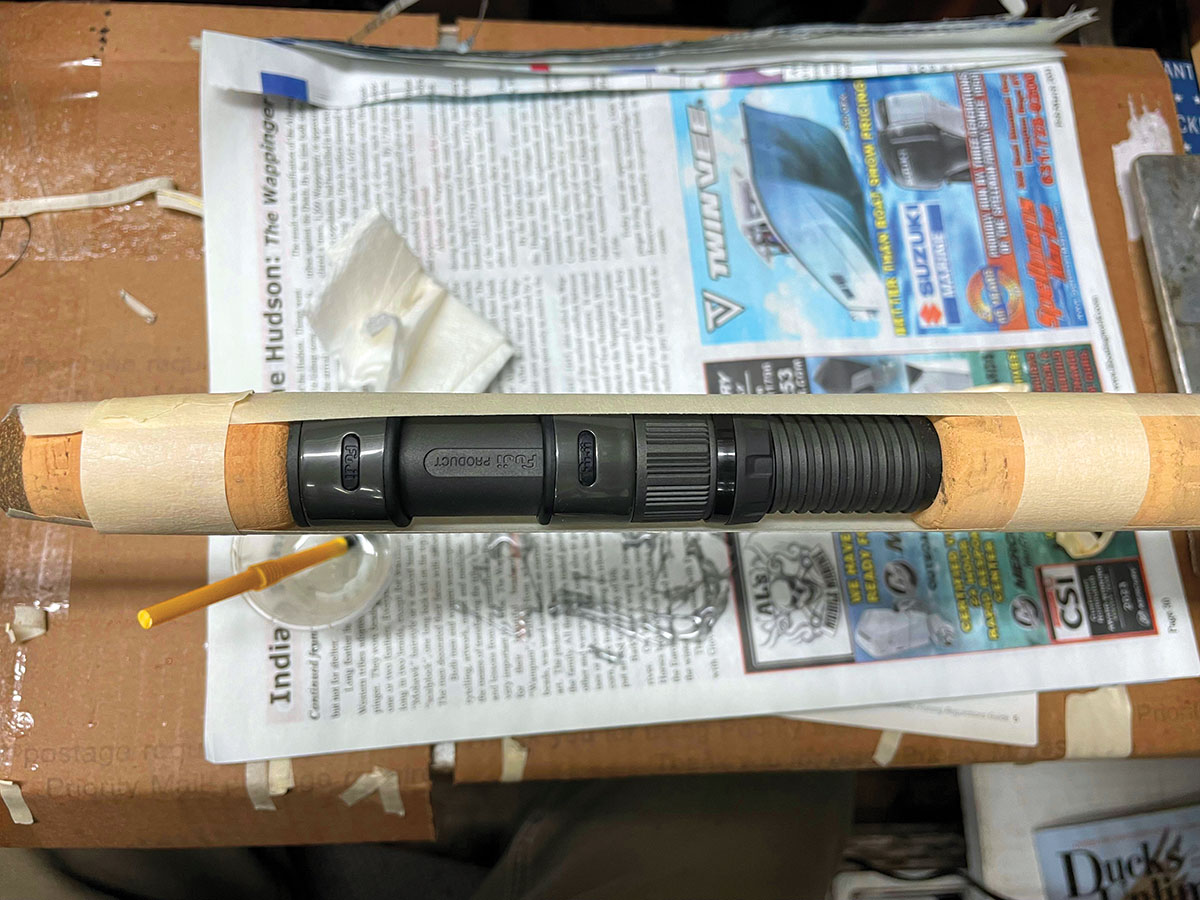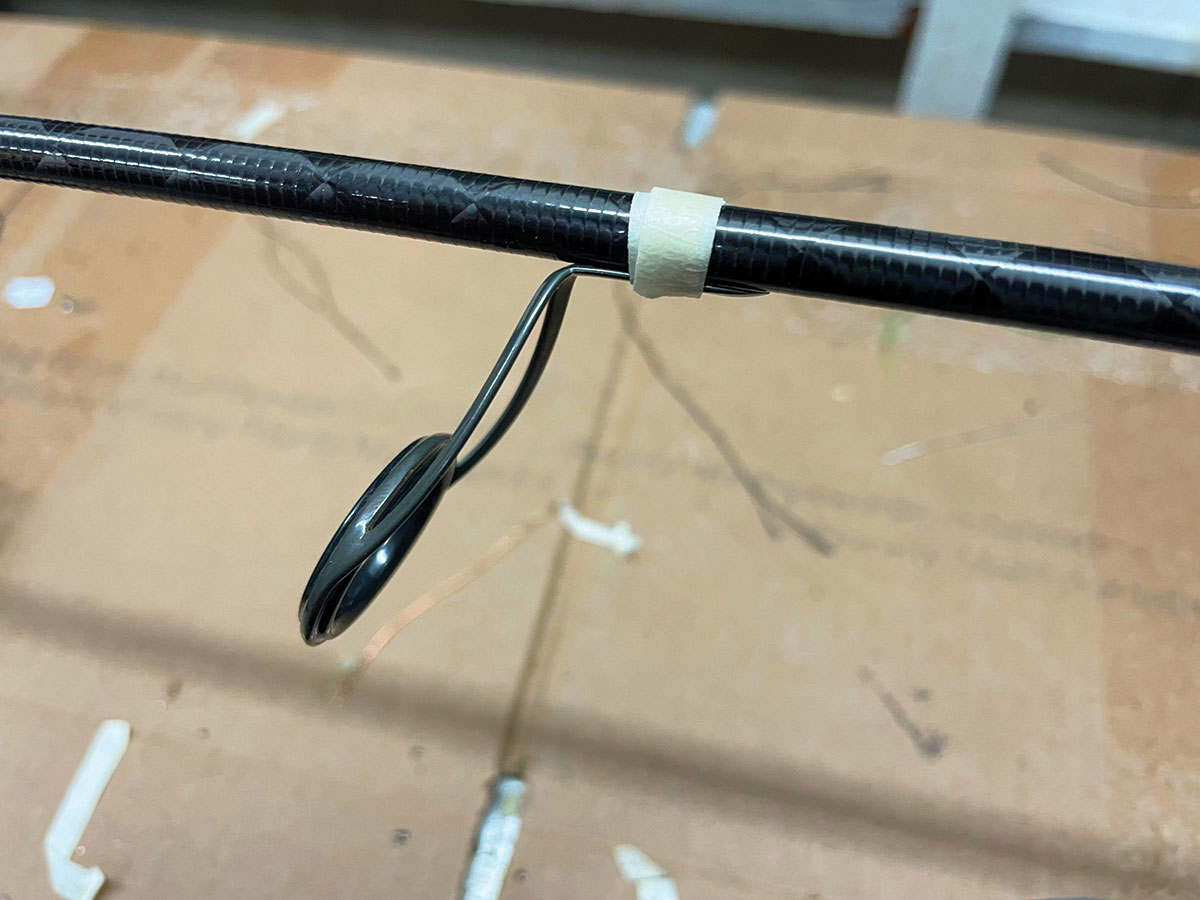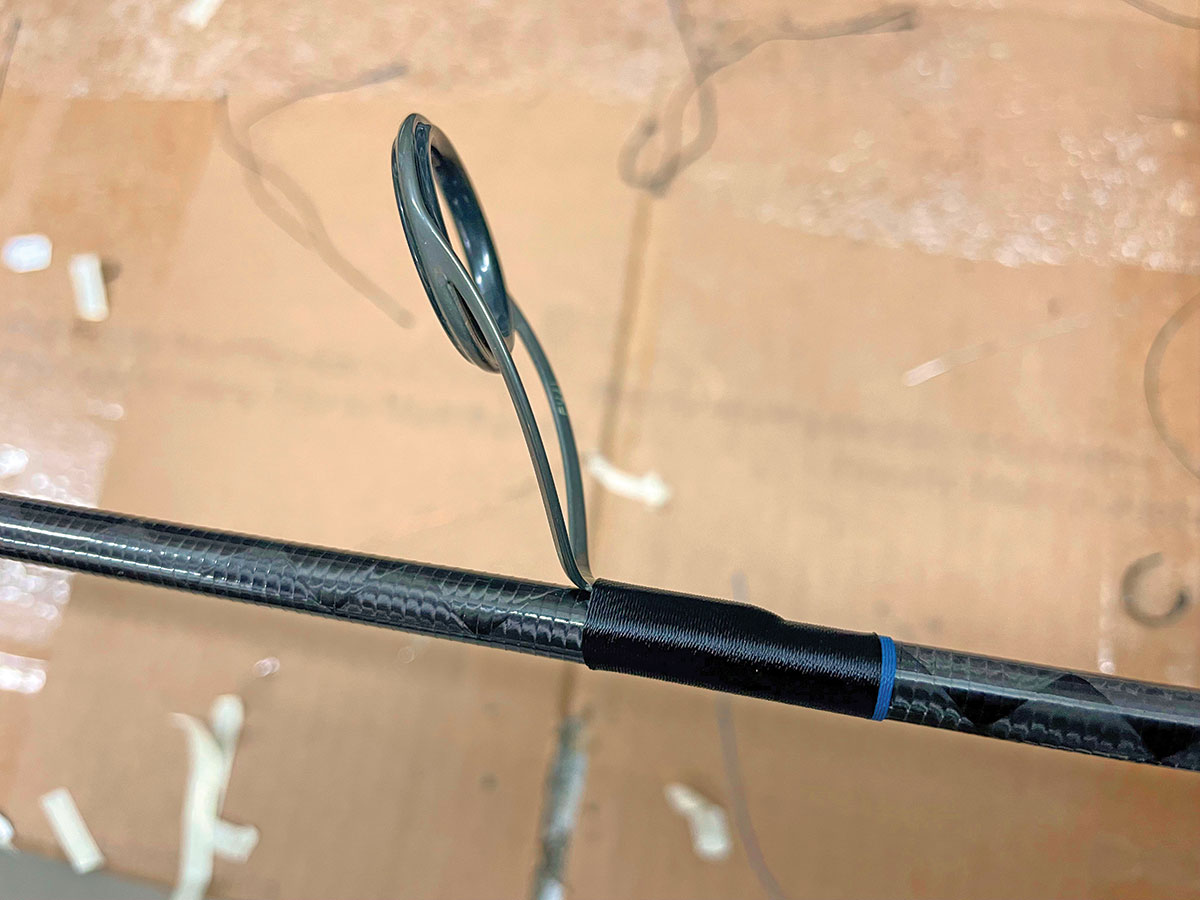
Building the simple, yet deadly snap-jig rod.
Twenty-five years ago, I developed a fishing method that has proven to be highly effective for an array of species up and down the coast. Today, this technique consistently still outperforms others using live or dead bait.
| WHY SNAP-JIGGING WORKS |
| Snap-jigging imitates the natural response of a baitfish when threatened. If you’re on a dock and scare school of snappers, killies, silversides, or any other baitfish, you’ll see that they dart a short distance in the blink of an eye. Their way to survive is to outswim their siblings when threatened and let the slowest get eaten. So if a predator fish such as striped bass comes up behind a baitfish, that fish would expect it to dart, and they also know that baitfish can only dart a short distance before losing stamina. They know the baitfish will become easy pickings after darting a very short distance. |
I was initially hesitant to share this secret, but with some persuasion from the late Fisherman Senior Editor Fred Golofaro, I began writing articles and giving seminars on how to perform the technique and its benefits. Now, I am delighted to see people all over the region employing this technique.
What I’ve noticed is that some anglers have needed some help with the perfection of the method, and a big part of that is due to the wrong type of action and layout of the rod they’re using to try and perform it. If the action is wrong, the bucktail won’t dance the way it’s intended to, and if the grip layout is incorrect, the angler will become fatigued relatively quickly, cutting down on productive fishing time. While some rods exist on the market that will get the job done right from the factory, I’ve taken the liberty of designing and creating a custom rod built from scratch that is tailored to the technique.
Follow along with me as I go into detail about creating this rod and why every part of it maximizes the technique’s potential.
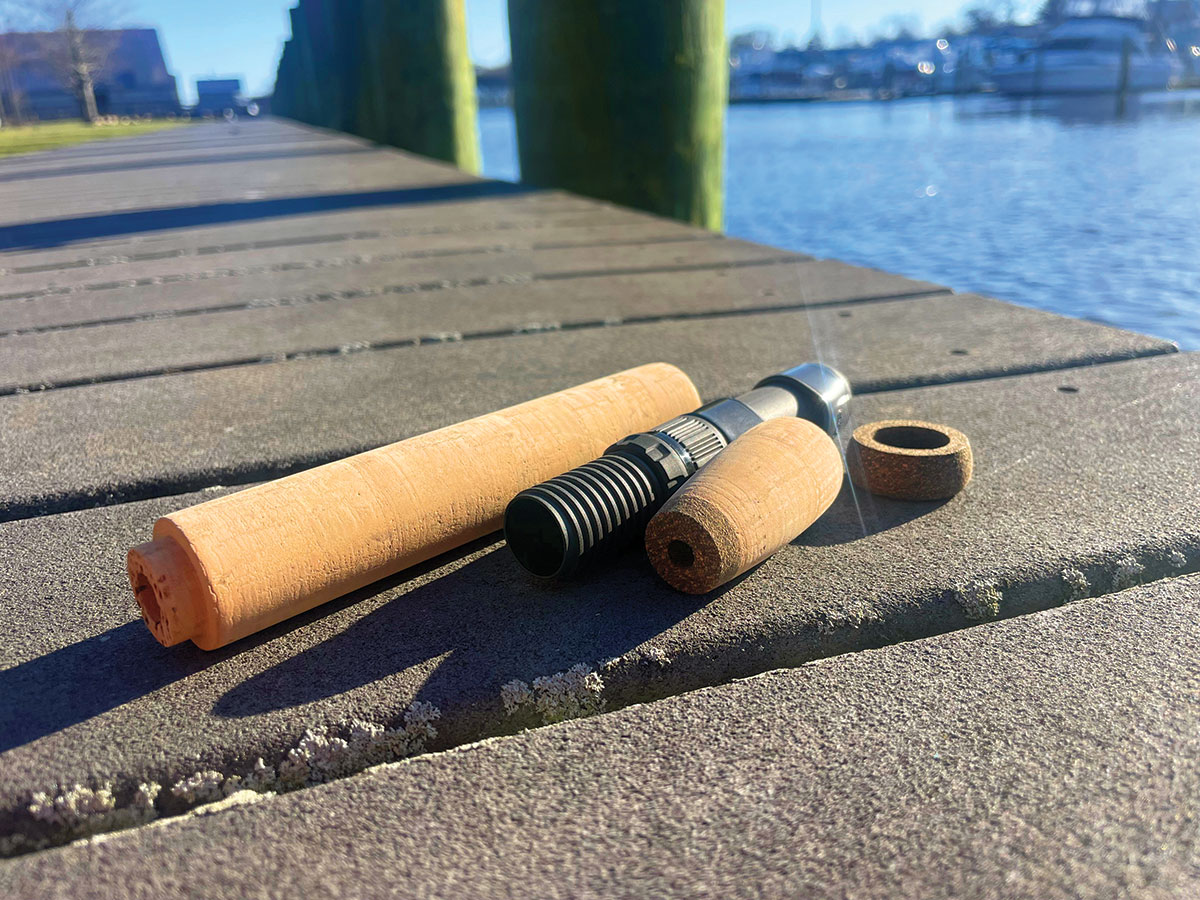
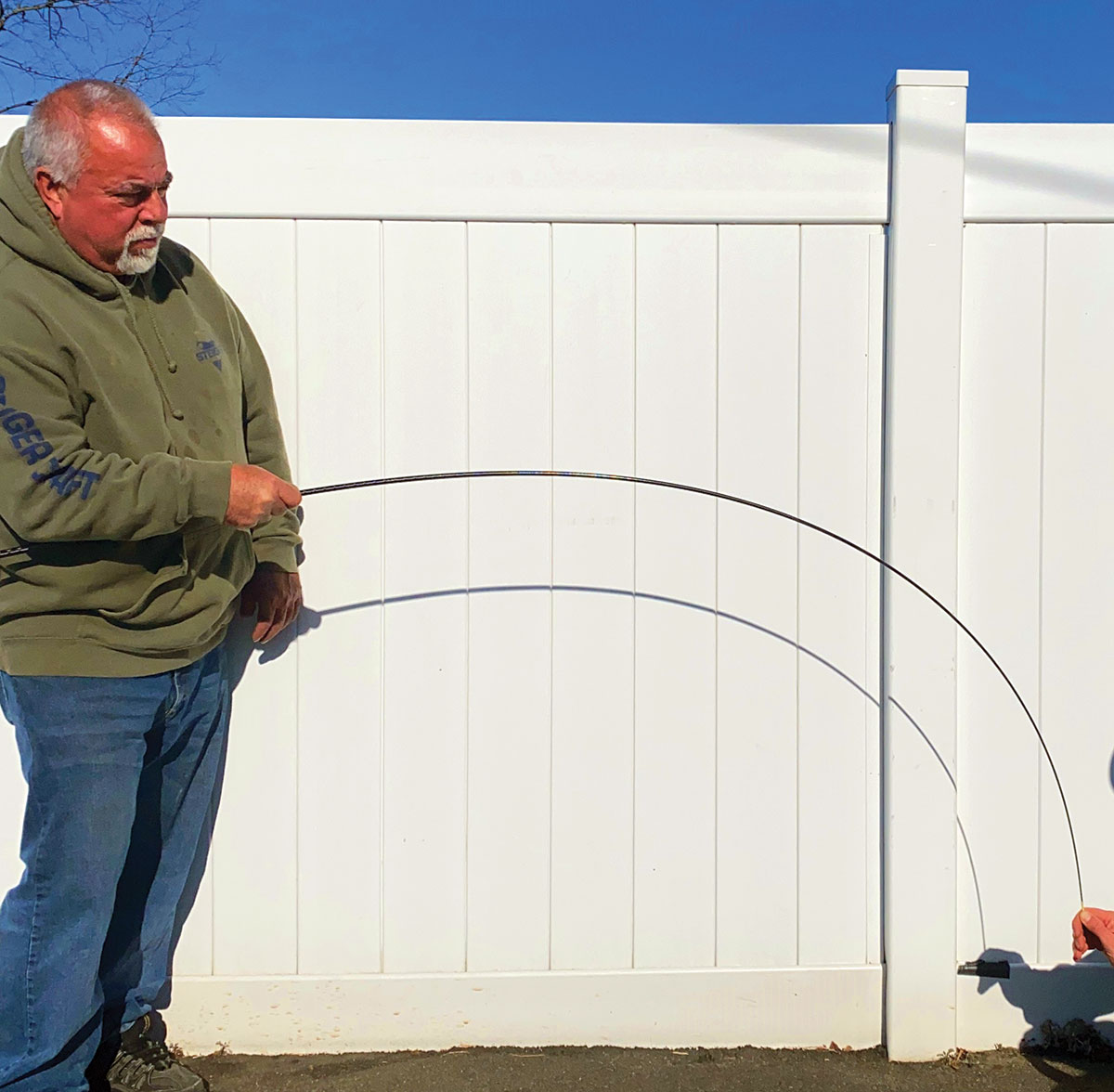
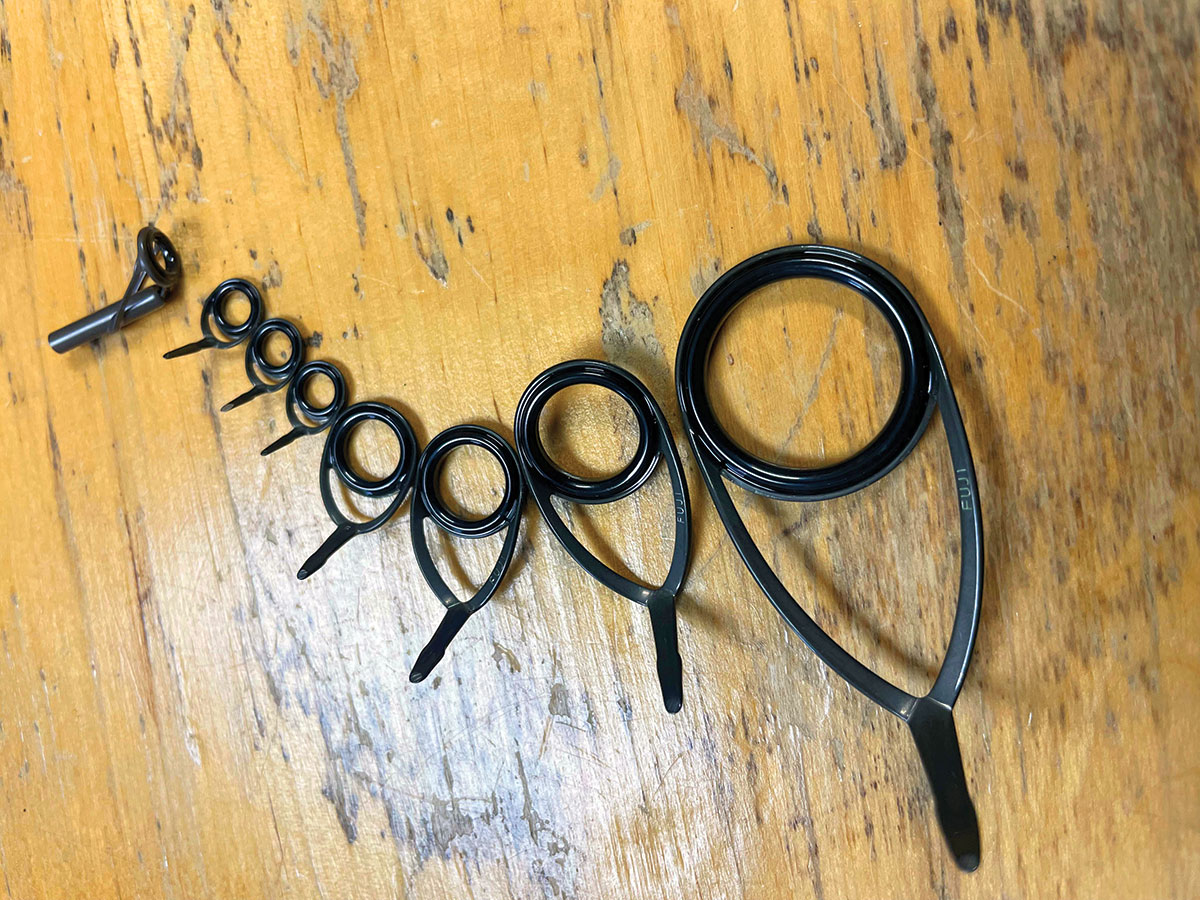
A Strong Base Blank
A number of raw blanks will provide a solid base of a snap-jigging rod with some trimming on the ends. For this specific build I picked out a Century ISS945FT Weapon Jr. With 2-1/2 inches taken from the tip section and 19-1/2 inches chopped off from the butt section of the blank. After reaching the 6-foot length, I was more than satisfied with the action for snap-jigging jigs from 5/8 to 1 ounces in 20 plus feet of water.
| LAYOUT SPECS |
| Each measurement is between the top of the guide rings, starting at the tip top.
Tip – 3” – 3-1/2” – 4-1/4” – 5” – 6” – 7-1/2” – 9-3/4” |
This modified blank ended up being a moderate action with an even parabolic bend throughout, giving it the ability to dance jigs accordingly for gamefish. The mag taper of the blank also assists with the lighter jigs and faster blank recovery. Added carbon fiber strengthens the overall build and provides insurance against the rigors of the rough technique. This is overall a beast of a build and I would but it on the high end scale of what will work.
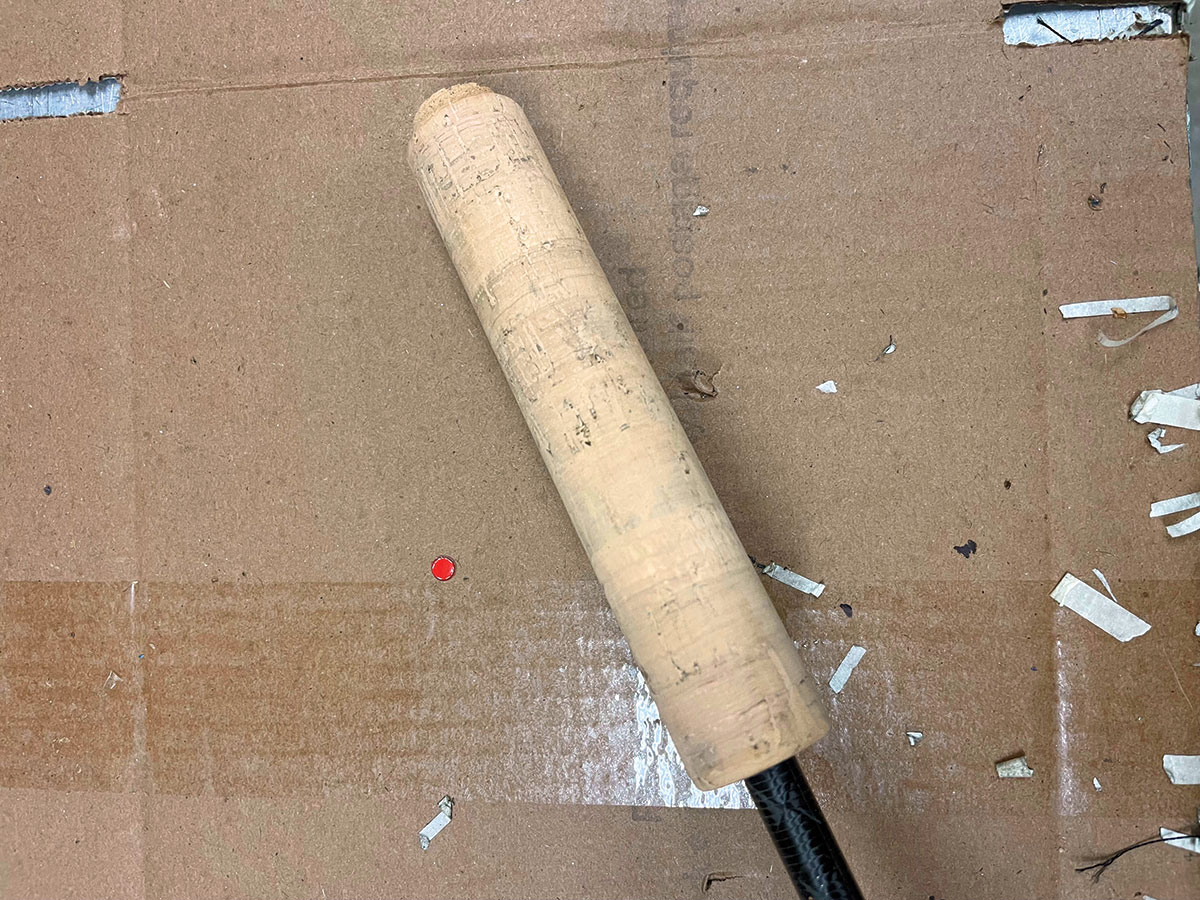
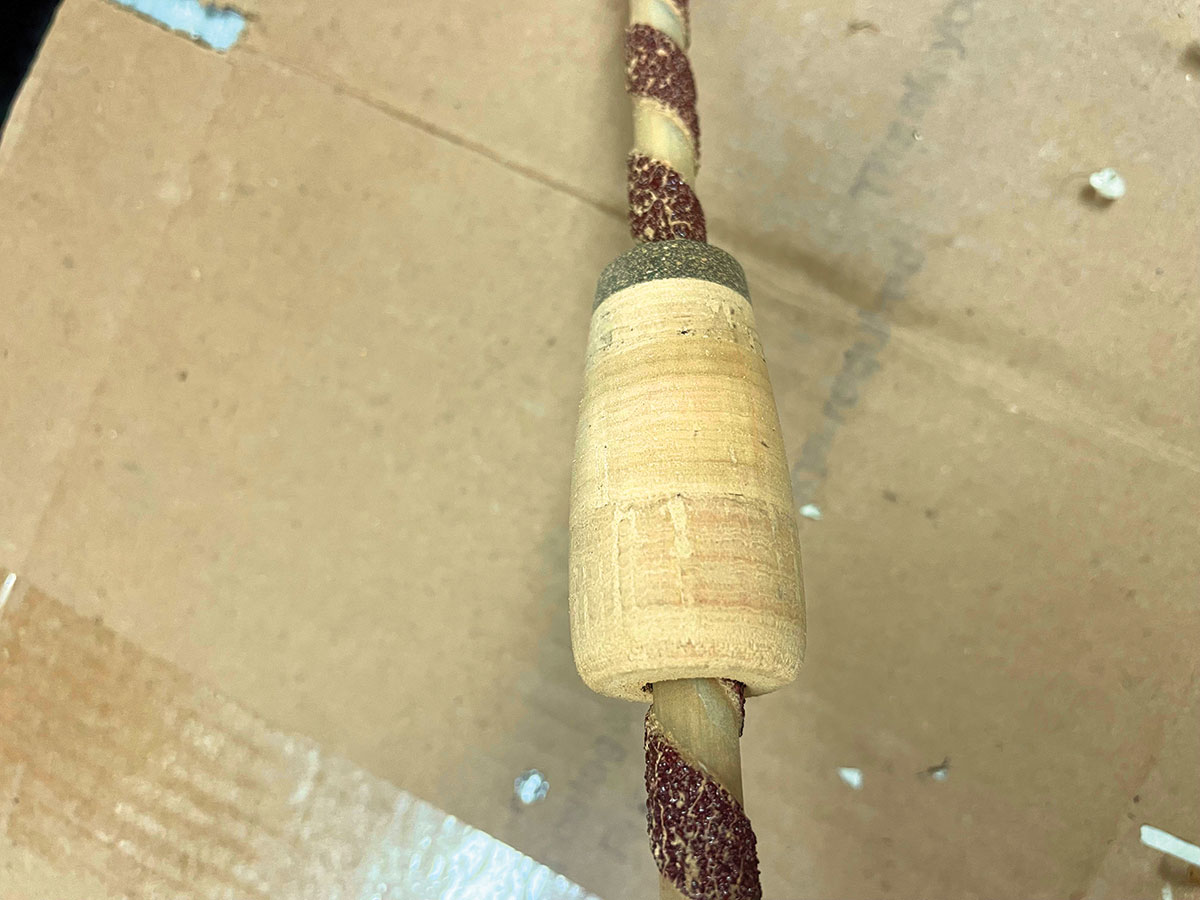
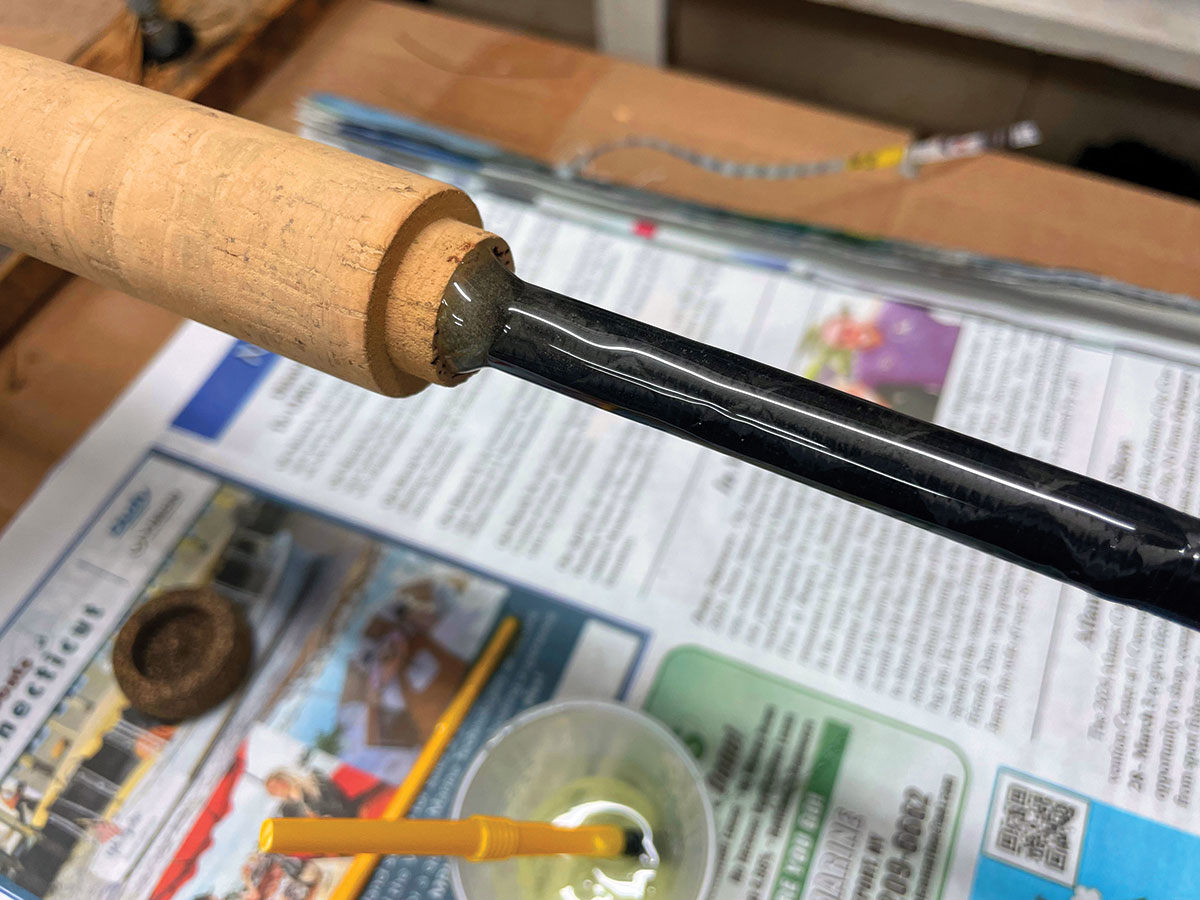
Getting a Grip
The build starts off with reaming out grips to fit them snug on the butt end of the Century blank. I prefer regular solid cork over something sanded smooth, like cork ring or carbon fiber because the force of the technique can be extreme and this might cause the rod to slip out of your hands with a slick butt grip, once wet. This will become apparent once you have a 30 to 50-pound striper hooked on the rod. About a 6 or 7-inch piece of cork grip makes up the rear grip with a small cork composite cap at the end.
| COMPONENTS LIST |
|
The reel seat used on this build has been a standard of mine for years and it’s the Fuji DSPM 17 with the addition of a Fuji Back Stop Lock Nut System. I highly suggest you incorporate the lock nut into your build since snap-jigging can be extremely aggressive and could cause the main reel seat nut to loosen up a bit. The last thing you want is a spinning reel flying out of your reel seat while fishing a big fish.
Above the reel seat is another piece of cork to round out the grip. You can use any basic piece but for this build I used the Fuji Cork Foregrip with Rubberized Cork (FGS2RC). Once again, I used a solid piece of cork for gripping purposes. If it get a little worn and rough, don’t worry about it because that extra grip with help you out in the long run (fight).
This rod build and technique will match well with a 2500 to 3500-size spinning reel. Anything larger will make the rod feel unbalanced and will not work properly. For reference, I’ve used the Penn SSV 2500, Authority 2500, Daiwa BG 2500 and the Van Staal VR 50 while snap-jigging for the best possible results and balance.
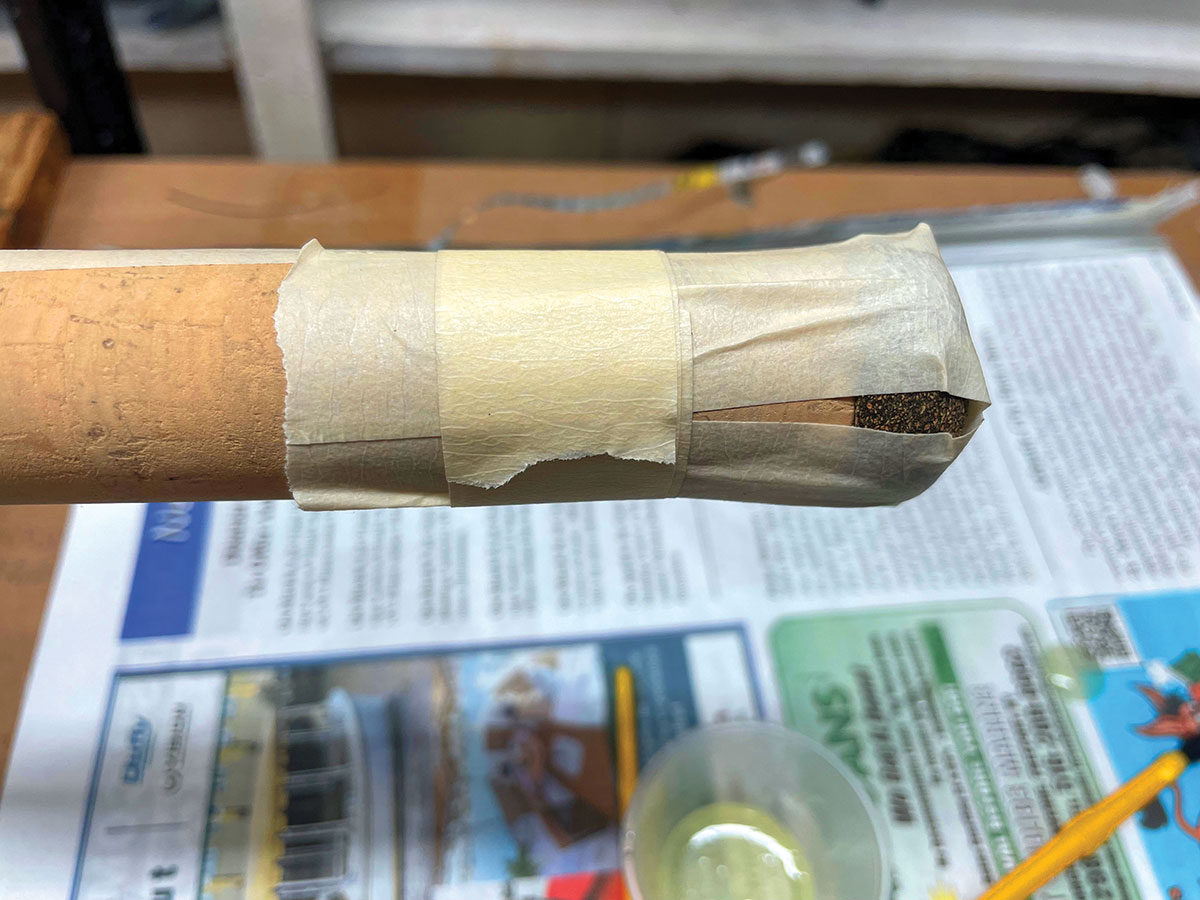
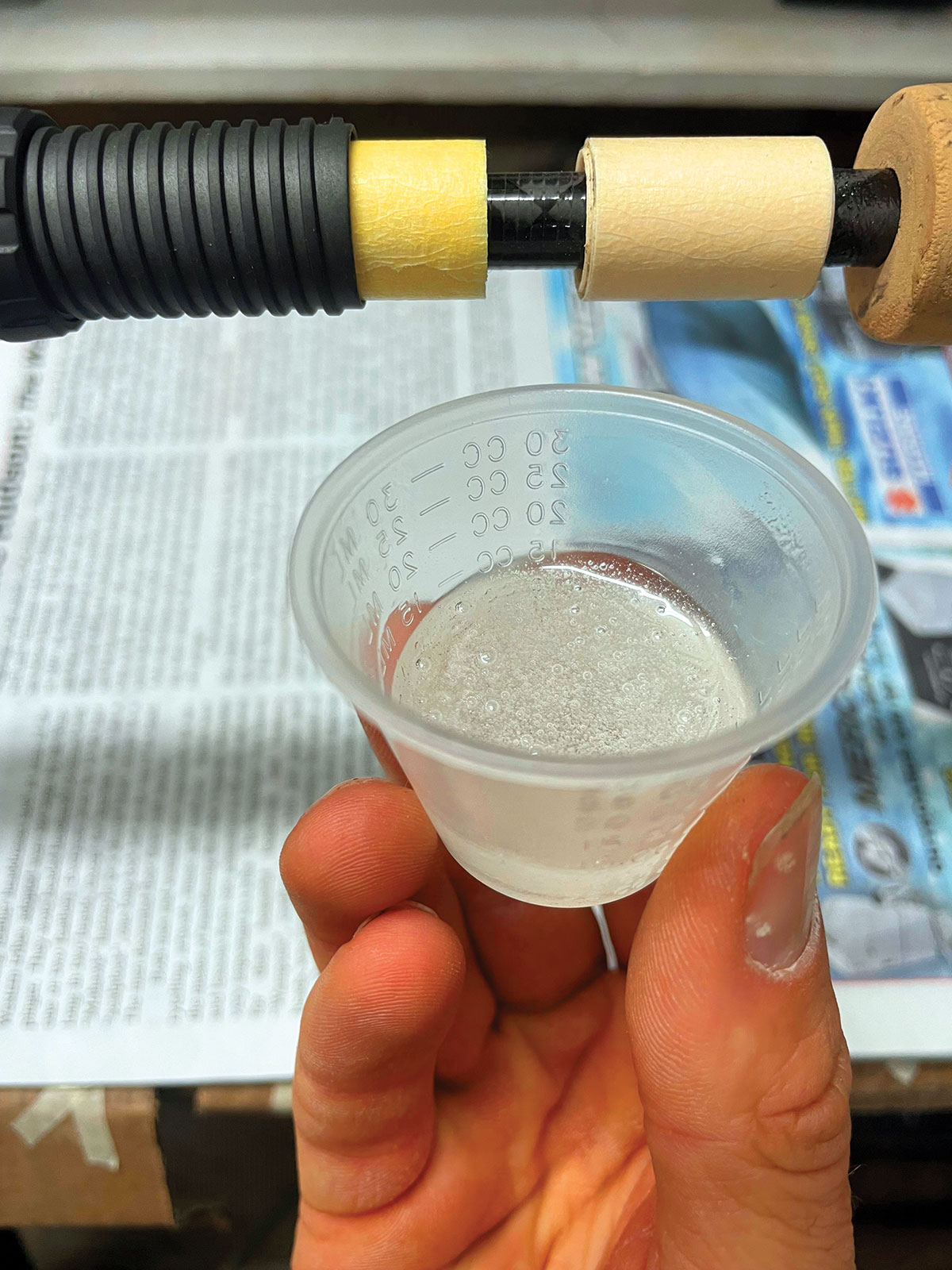
Single Foot Layout
Guide layouts these days can be crazy in my opinion. From all of the different concepts every builder develops, to using micro guides and to even using larger layouts. The technique of snap-jigging is not actually a finesses one that is daintily performed so using something that is more sensitive is not always the most important. I ended up picking out a durable but yet affordable and available guide because I’ll admit it, the technique does break a guide once in a while and having something on the rod that can be fixed for a reasonable price will benefit you in the long run. I ended up going with a Fuji KL series set of single foot guides. This is a seven-guide layout consisting of the KL25, KL16, KT8 and KT6 x 4 with a matching size 6 tip top. One important thing to keep in mind is the tip should be as snag-proof as possible. You will get tip wrapped at times snap-jigging and a tip that is relatively clean and compact will make untangling easier.
| ABOUT THE AUTHOR |
| Capt. John Paduano fishes up and down the Atlantic Seaboard, but spends the majority of his Northeast season running light tackle charters aboard his 25-foot Parker Fishemlite out of Montauk, teaching clients the art of snap-jigging. Email him at [email protected]. |
In actuality, the snap-jig build is a simple one. The most important part to remember is having that proper blank action and making sure you have that shorter, compact butt end for increasing your fishing time without fatiguing. Add some wraps to the guide layout (black with blue trim on this one) and then a couple of coats of finish and you have a highly capable snap-jig rod ready to possibly land that fish of a lifetime while employing a technique that will forever change your fishing outlook with light tackle.
